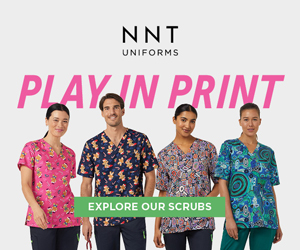Queensland nurses and midwives have identified dangerous workloads, moral distress or fatigue and insufficient income as the key barriers to recruiting and retaining workforce as part of a survey conducted by the Queensland Nurses & Midwives’ Union (QNMU).
The survey also focused on upskilling the current nursing and midwifery workforce and fostering new ways of practice and models of care.
More than 6,000 members across the public and private healthcare sectors and aged care participated in the study.
Safe workloads, ensuring minimum staff ratios and skills mix, overdue wage increases and safe working conditions, were seen as the main solutions for recruiting more nurses and midwives to the understaffed Queensland health system.
QNMU members also identified education and training opportunities (96.03%), management support to take professional development leave (87.14%) and more clinical facilitators to provide support/education on shift (84.97%), as ways of upskilling the current nursing and midwifery.
The finding come ahead of the health summit convened by Queensland Health (QH) in Brisbane today (27 September).
QNMU Secretary Beth Mohle said the survey results provided a valuable insight into member attitudes, concerns and potential solutions for chronic understaffing impacting patient care.
“It’s given our members with an opportunity to voice their concerns about dangerously excessive workloads, poor pay and working conditions – and how they’re affecting the retention and the recruitment of highly-trained nurses and midwives across the Queensland health system,” Ms Mohle said.
“Whilst this year’s State Budget saw the greatest capital investment in health in many years, these new facilities cannot be resourced without adequate numbers of trained staff.”
Ms Mohle said the health summit was a great opportunity for the Government to genuinely listen to nurses and midwives on the ground and find real solutions that can help retain and recruit health professionals.
“We need to work together to reduce the intense pressures on the current workforce and make it safer for patients.
“Nurses and midwives are leaving the system in droves. There are solutions which can be implemented right now to retain the current skilled workforce and buy the Government time to recruit the next generation of nurses and midwives.









6 Responses
These issues and more. We are also leaving in droves or jumping ship due to bullying and adverse action. These issues are greatly under-reported and poorly dealt with at all levels.
With regard to nursing in aged care, skill and bedside manner are not prioritised compared to the completion of tasks in the minimum time possible and completion of endless paperwork which is meaningless to the resident. Task orientated to the point where poor lonely vulnerable residents are merely in the way of the tasks that need to be completed! How did we get to this!! By introducing unrealistic never ending standards of care and not
mandating staff ratios….that’s how. Go figure. Staff leaving due to unsustainable increasing work load and no increase in staff or pay = poor resident outcomes, no job satisfaction and general feeling of being flogged and used every shift.
Bullying and harassment that gets overlooked. More support/training for NUMs
To ease some of the bullying I think all EEN should be given the small amount of training that is required and automatically switched to RNs. This eliminates power. EENs have a lot of knowledge and training already there is not a great deal of difference so make us all equal
This is not just a concern for Queensland but for the whole of Australia ( endemic) & can no longer be ignored . It’s pure political negligence if this continues to be ignored . We are all accountable & change must be the result .
A suggestion, if we were smart and visionary, we could look at, as soon as practical, restarting hospital based nurse training WITH university subjects (combine the two) still get a degree but students are locked in as an employee again as they once were for the entire duration of their 3 year degree, it’s now a viable solution to address staffing issues into the future. There would literally be 1000s of applicants, if students could once again be employed whilst training, so many applicants, that many would have to be turned away. Our current solution in my view is unethical and immoral poaching nurses from countries that can not afford to lose their own, it should not be Australia’s long term solution to the nursing shortage. Wasting time trying to find other solutions is ridiculous. Hospital based nurse training had issues granted, but it worked like a well oiled machine for almost 100 years. If we combine our university system with our hospital system it may be the answer. Each student nurse is then locked in, wards are staffed. Each facility could grow their own workforce and surprise surprise, they’d finish their degree ‘practice ready’, unlike what is currently happening. May be little need for graduate programs,
more graduate support. Personally with baby boomers retiring at a rapid rate and people reluctant to enter nursing, I don’t see things improving at all. Now is the time to completely rethink what we’ve been doing and come up with a new model.